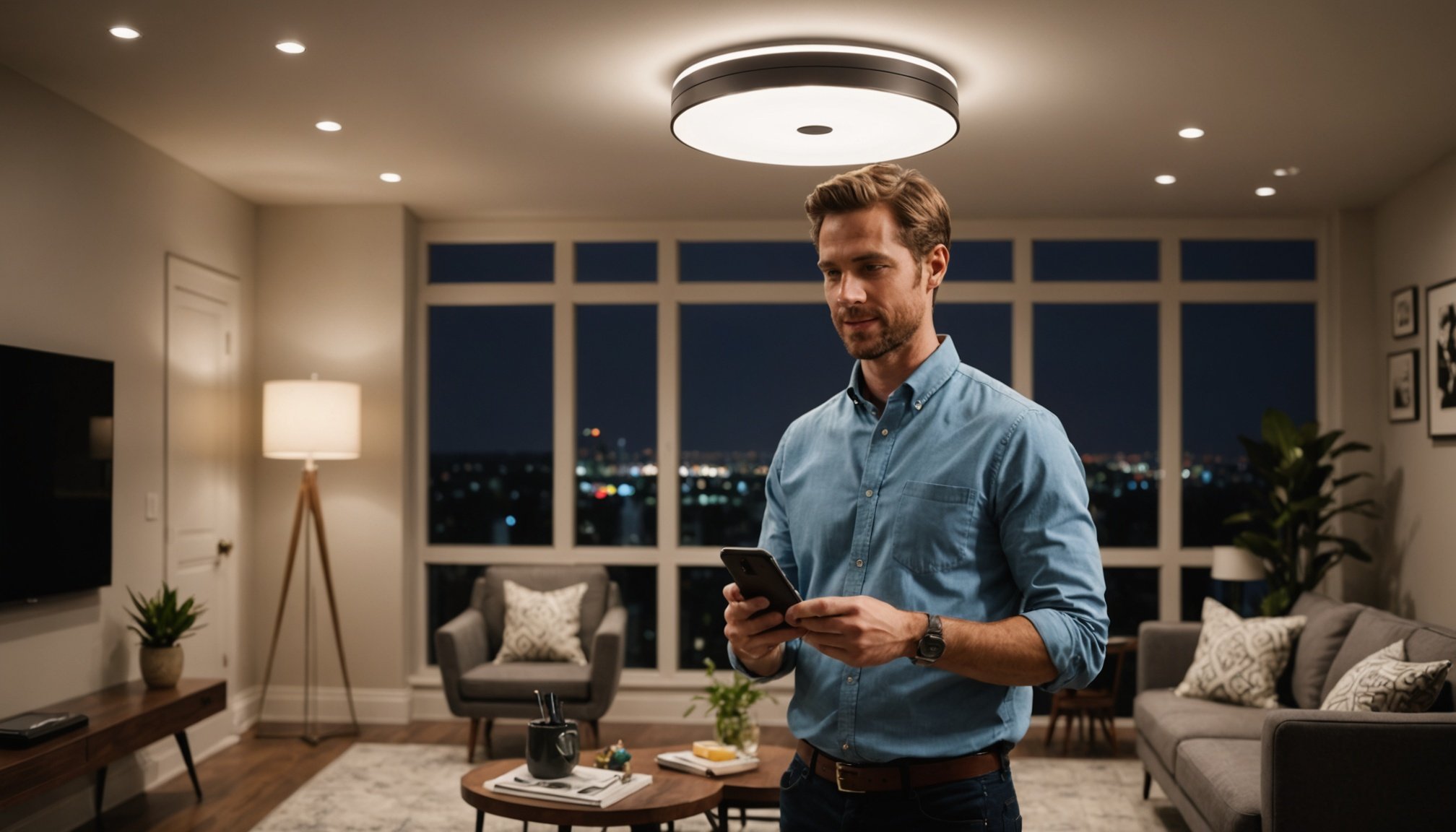Understanding Smart Lighting Systems
In a world where smart home lighting is quickly becoming the norm, understanding how these systems work is pivotal. At its core, smart lighting technology integrates artificial intelligence and internet connectivity to enhance traditional lighting systems. The ability to control lights remotely, automate settings based on user behavior, and even sync with other smart devices forms the foundation of this innovative approach.
Notably, when selecting a smart lighting system, key features to consider include compatibility with existing smart technology infrastructure, ease of use, and robust security measures. These systems often offer features like adjustable brightness, color temperature control, and voice activation, which can significantly enhance living spaces.
Popular brands dominating the smart lighting market include Philips Hue, LIFX, and Sengled, each offering an array of products tailored to various needs. For instance, Philips Hue is renowned for its broad compatibility with other smart devices, while LIFX captures attention with its vibrant colour options.
With the rise of smart technology, embracing smart lighting systems is more about enriching the user experience than just illuminating a space. Proper understanding and selection can transform any home into a modern, efficient, and convenient living space.
Essential Smartphone Apps for Smart Lighting
In the evolving world of smart technology, smart lighting apps have become indispensable for managing and enhancing lighting systems. These apps provide users with a range of features designed to transform lighting into a seamless experience. A comparative review of leading apps highlights their capabilities and integration with other smart home devices.
Key features in these apps often include real-time control, allowing users to adjust the intensity and colour of lights dynamically. Additionally, some offer scheduling options to automate lighting patterns according to daily routines. Integration with voice assistants like Alexa or Google Assistant further enhances convenience, enabling hands-free control.
Another significant advantage is the ability to sync lights with music or movies, creating an immersive ambiance tailored to personal preferences. This feature is particularly popular among users looking to enhance entertainment environments. App user interfaces are typically intuitive, focusing on simplicity to ensure accessibility for all age groups.
Lastly, top-performing apps offer extensive customisation options, such as creating scenes that match different moods or occasions. By integrating seamlessly with other smart home devices, these apps enable holistic home automation, bridging the gap between various smart technology systems and maximising user comfort.
Customizing Ambiance for Different Occasions
Creating the right ambiance customization is an art enabled by modern smart lighting. Lighting settings can transform spaces, making them perfect for any occasion. From relaxation to productivity, smart technology offers myriad options.
Creating a Relaxing Atmosphere
To create a tranquil space, adjust the lighting settings to low brightness and warm colour tones. Such setups promote calmness and can be enhanced with features like gradual dimming. Real users often recommend using colours such as soft blues or gentle warm whites to replicate a serene environment.
Setting Up Romantic Lighting
For a romantic evening, utilise a subtle interplay of warm and cooler hues. Smart apps often include scenes specifically for this purpose, making occasion-specific lighting easy. Users have found success with soft pinks and deep reds, which can be accentuated through app-based sequences.
Energizing Lighting for Workspaces
In need of a productivity boost? Bright, cooler lights are your best bet. Adjust colour temperatures to mimic natural daylight for an energy lift. Ambiance customization allows users to shift seamlessly between work and leisure settings. Many appreciate how lighting can mimic outdoor environments, enhancing focus during demanding tasks.
Step-by-Step Guide to Setting Up Smart Lighting
Setting up smart lighting systems can initially seem daunting, but breaking down the process simplifies it significantly. Start by selecting compatible smart bulbs and fixtures, ensuring they work with your smart home lighting infrastructure.
Installation Instructions
- Start by installing bulbs or lighting fixtures – Carefully screw in bulbs or mount fixtures, ensuring they are securely in place.
- Power up the system – Switch on the light and confirm that they are functioning correctly with the existing electrical setup.
Connecting and Configuring Devices
- Pair with a mobile device: Download the corresponding smart lighting app, which provides a centralised platform for control. Most apps require you to create an account or log in.
- Add devices: Within the app, use the ‘Add Device’ option. Follow prompts which typically involve selecting the type of lighting and scan the room until the lights are detected.
- Configure settings: Customise settings such as light brightness and timings according to preferences.
Troubleshooting Common Issues
- Connection problems: Ensure your Wi-Fi signal is strong and devices are synced to the same network.
- App glitches: Update the app to the latest version for improved performance.
Tips for Maintaining and Upgrading Your Smart Lighting
To ensure the longevity of your smart lighting systems, regular maintenance is pivotal. Start by cleaning the bulbs and fixtures with a dry cloth to prevent dust accumulation, which can diminish brightness and colour accuracy. It’s advisable to check for software updates periodically. These updates often include security enhancements and new features that can keep your system running efficiently.
Recognising when it’s time to upgrade is crucial for optimising your smart lighting setup. Indicators can include sluggish performance or outdated features not compatible with smart home lighting advancements. Upgrading components keeps pace with evolving smart technology, ensuring enhanced security and functionality.
Enhancing your existing setup cost-effectively can be achieved by integrating new technologies with current systems. Consider adding smart lighting accessories like dimmer switches or sensors to expand capabilities without a complete overhaul. Battery-powered options can reduce energy consumption, proving both economical and environmentally friendly.
When managing your lighting systems, preventive measures go a long way. Avoid over-tightening smart bulbs, as this can damage the connections. Additionally, placing smart lights in well-ventilated fixtures can prevent overheating, further extending their lifespan. Following these tips will keep your lighting system smart and efficient for years to come.
Expert Insights and User Testimonials
Smart lighting systems are more than just a trend; they’re reshaping how we interact with our homes. Industry experts highlight that integrating smart technology into lighting systems improves energy efficiency, reduces utility bills, and enhances overall convenience. As smart home installations grow, experts predict increasing integration with other smart devices, offering a cohesive living experience.
User experiences often reflect the transformational impact of these technologies. Many users share how smart lighting systems have simplified daily routines through features like customisable scenes and proactive adjustments based on the time of day. Jane, a long-time user, praises her system’s ability to automatically dim lights in the evening, creating a relaxing atmosphere without manual intervention.
Despite these advantages, some pitfalls exist. For example, users sometimes encounter connectivity issues. Expert opinions suggest ensuring a strong, stable Wi-Fi connection and choosing systems known for robust syncing capabilities. Roberts, a smart lighting enthusiast, advises future buyers to carefully read product reviews and invest in reputable brands to avoid such hassles.
Ultimately, gaining insights from both experts and users can guide in harnessing the full potential of smart lighting, ensuring a balance between innovation and practicality. Through shared experiences, customers make informed decisions, adapting systems to their unique lifestyles.











